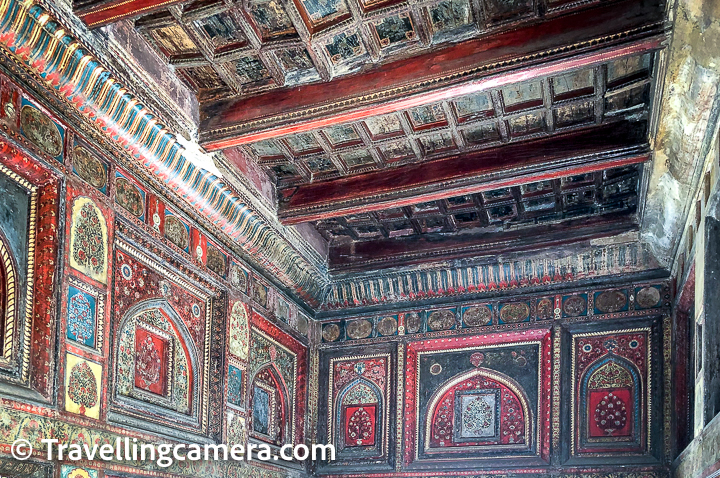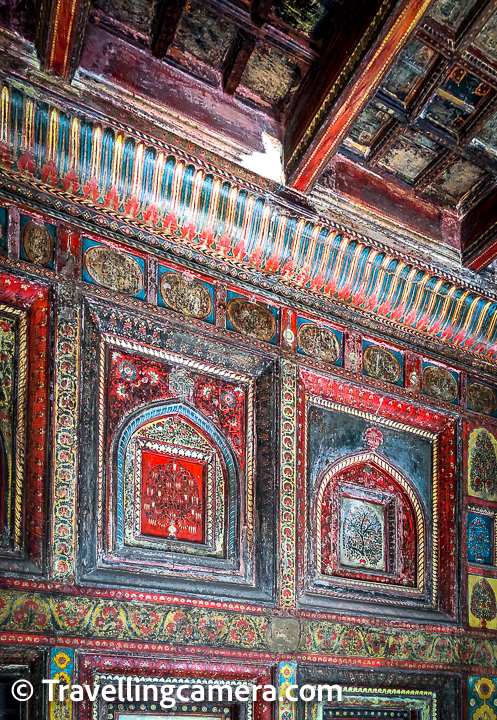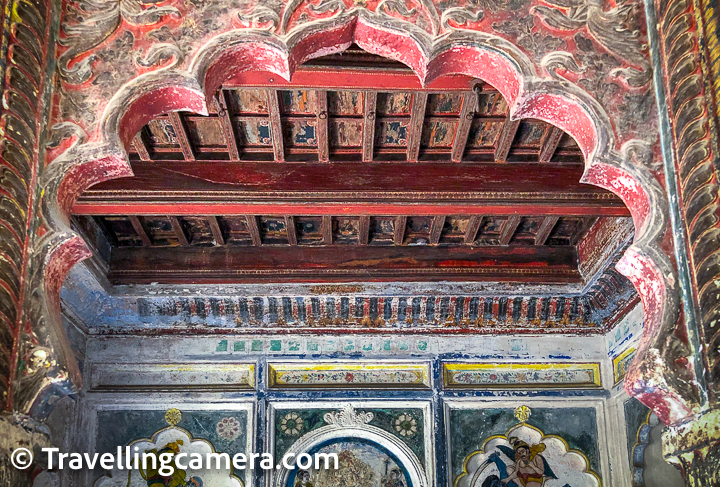Rani Mahal, Jhansi, Uttar Pradesh || An unpolished diamond, a reminder of the 1857 revolt for India's independence
A few hundred meters from the marvelous Jhansi Fort is the relatively inconspicuous Rani Mahal. The mahal is tucked away in the crowded Jhansi Market and if it wasn't for google maps, one wouldn't even notice the unimposing entrance to it. The fact that there are several hawkers and cars blocking its stark yellow façade, make it even more subdued.
Right in front of the Mahal is the authorized parking where you can park your vehicle. We drive an SUV, but even for smaller vehicles, this parking can be quite a challenge. It looked like some vehicles are permanently parked in this lot so there is hardly any space for the visitors' vehicles. And the spaces that are available are too tight at times.
It is an L-shaped space, and you can either decide to park your vehicle deep inside the parking, if the parking isn't already full, or park it closer to the parking entrance and leave your keys with the parking guy. We weren't too comfortable to leave the keys with anyone as we were travelling with some luggage, so we didn't have much choice but to park it deep inside. But this would cause considerable hassle later on. Will share more later.
The ticket to enter the Rani Mahal costs Rs. 20 for Indian travellers and Rs 250 for Foreign travellers. For citizens of SAARC and BIMSTEC countries too, the ticket cost is Rs. 20. At present there is some restoration work going on here, but most of the mahal is open for exploration.
The Rani Mahal is a royal palace in the city of Jhansi, Uttar Pradesh. The palace was built by Raghu Nath-II, the subedar of Jhansi, in the 18th century. The palace later became one of the residences of Jhansi ki Rani Lakshmibai, who used it between 1853-58, after her husband Raja Gangadhar Rao's death.
One of the reasons this palace does not stand out is because it lacks the high walls, domes or roofs that are visible from a distance. It is a two-storied rectangular structure with a courtyard at the center and rooms and corridors on all sides. It has multi-foiled arches with intricate rosette and peacock patterns.
The ground floor of the palace has countless stone sculptures, all dating from 9th to 12th centuries. They have been collected from Madanpur, Barua Sagar, Dudhai and Chandpur and are testimony to the skills of the artisans from the Gupta to Medieval periods. The mahal is now considered a museum.
However, these sculptures are just lying here and not much information is available about them at the palace. You can look around them, but if you are looking for plaques describing the artwork or at least dating them, you will be disappointed. Since ASI maintains it, I hope they will make all efforts to actually turn it into a very informative museum.
The second floor of the palace is where you actually get some goosebumps. Traces of the colorlful, beautiful paintings and carvings are still very much visible and when you imagine that Rani Lakshmibai herself had once lived in these chambers, you cannot help but wonder whether the walls and floors still have some of her DNA.
When you look at the grandeur of some of these old buildings and realize that almost all cities of the country have such hidden gems, you also realize that so much priceless history and heritage lies unexplored and might also be going to pieces at a very fast pace. The speed of decision-making in our country is dismal, and considering how shoddily most of our people treat places of historical importance, the thought just depresses me. But nevertheless, ASI has slowly but steadily been working towards restoring some of these places, and I do hope that the bureaucratic machinery too will catch up soon.
Anyhow, we spent close to 45 minutes exploring this place. You can spend more time if you like, but we were starving and thirsty. So we left and went in search of some food. First we had a Nimbu Soda at roadside and also the vendor about a suitable place to have a good meal. He gave us some names and the closest seemed to be Sanchi Restaurant, so we went there. It turned out to be a small non-descript kind of place, but served an okay Indian meal.
After having lunch, when we reached the parking, we realized that our car was still at the far end of the parking and there was a long queue of cars parked behind it. But the parking guy was very optimistic about our prospects of taking out our car. The fact was that even if all the cars were backed out, we would need to reverse our car all the way back onto the road. There was no space to turn the car. And then when the parking guys started backing out other cars, it created ruckus on the already crowded road. The amount of honking was unbelievable. And to top it all, the car right behind us broke down and had to be pushed all the way out. In the end, we managed to reverse our car out, but it was an interesting experience, to say the least.
While we did not spend enough time to explore the palace, it was a nice place and people who are interested in art and sculptures can find a lot of articles of interest in here. At Rs. 20, the place is definitely worth a visit. The place has a lot of unharnessed potential and we do hope that ASI will take the right steps to do justice to it.














.jpg)
Comments